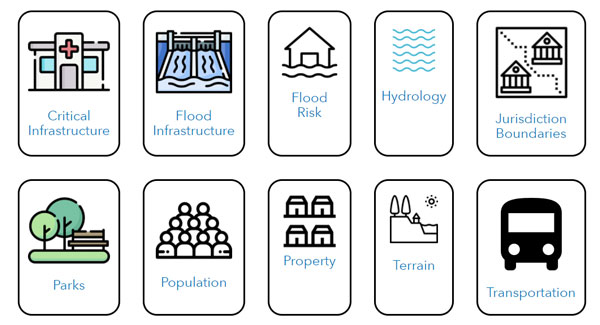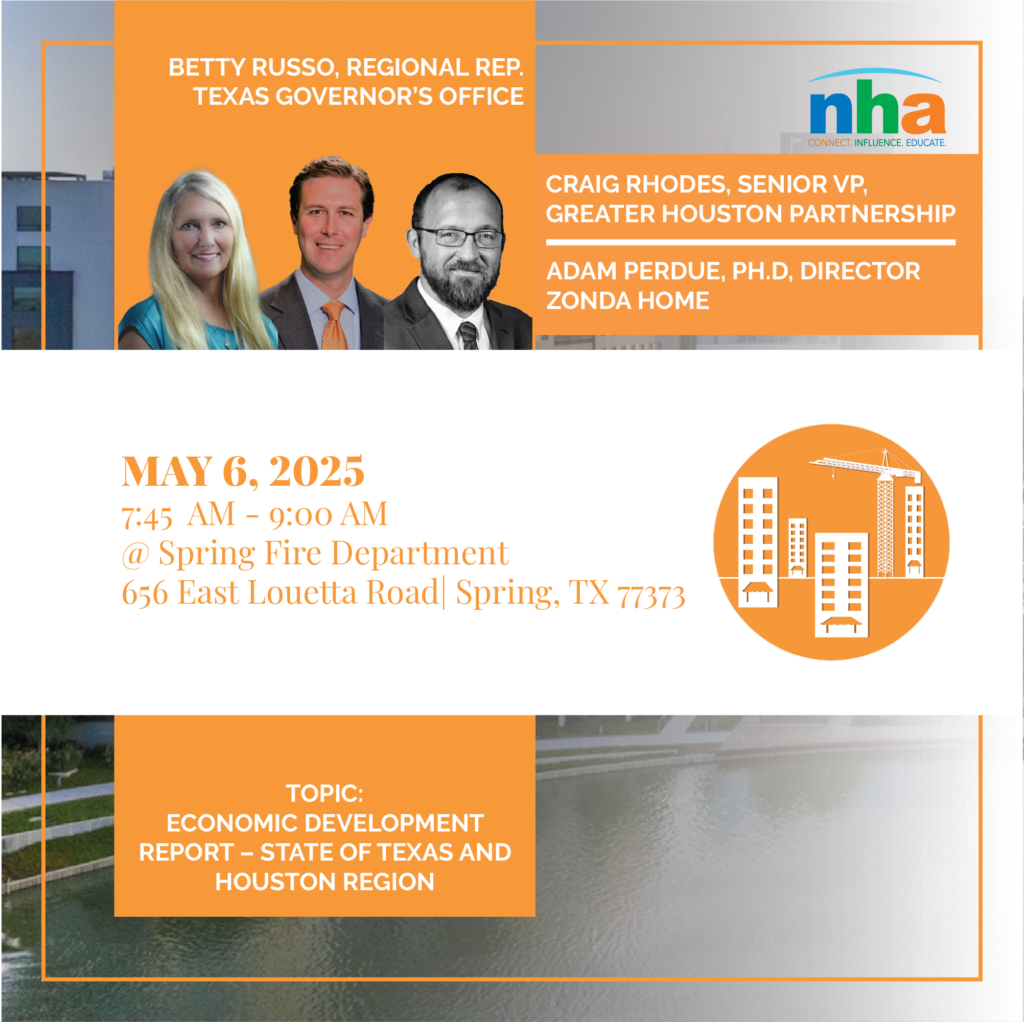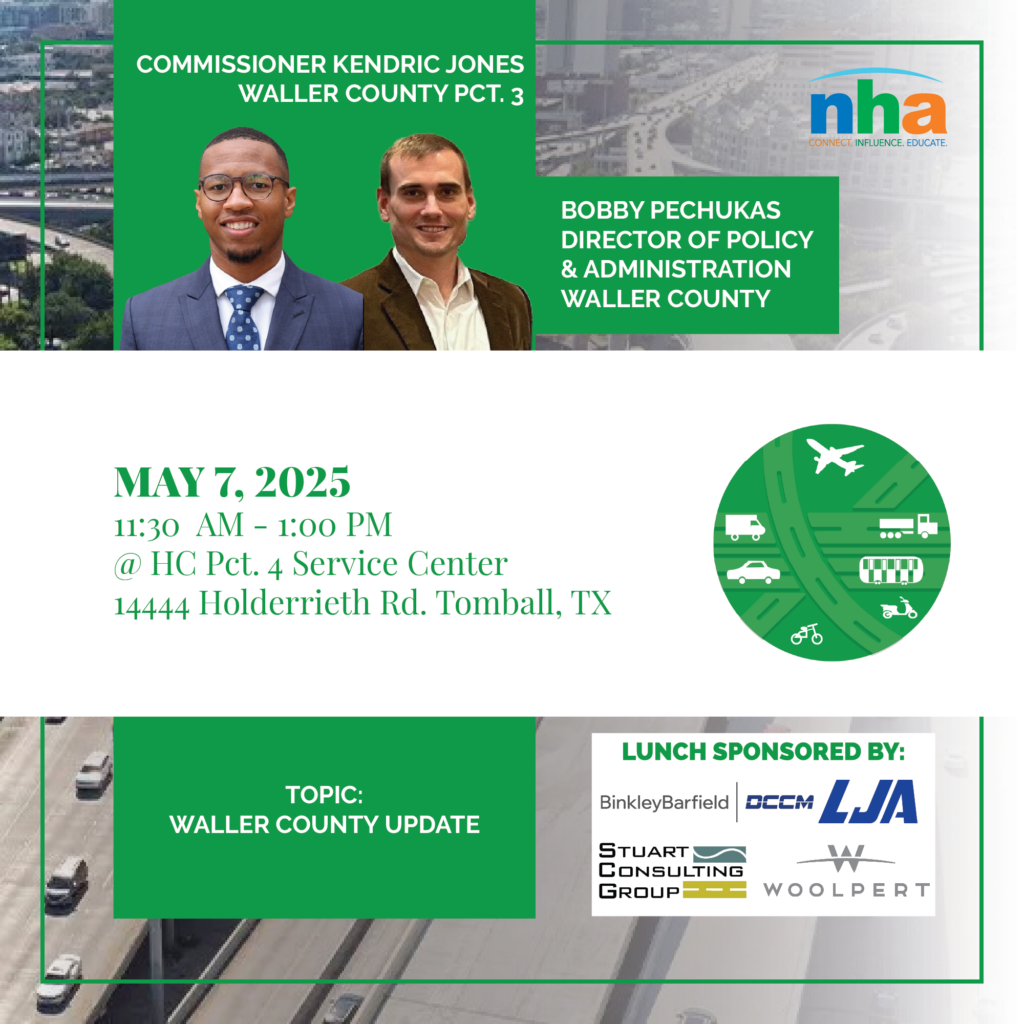
The NHA Board of Directors voted in favor of submitting comments to the Texas Water Development Board to provide feedback on the State Flood Plan ranking criteria. Alan Black of Quiddity spoke with the NHA Board about specific draft comments that came out of the NHA Strategic Flood Reduction Priorities (SFRP) group. The SFRP group is led by Alan Black & Chuck Wolf, of Freese & Nichols, and is newly formed to discuss and create a priority list of flood reduction projects in our region, similar to the NHA Strategic Mobility Plan.
The suggested comments were split into two categories. Things to “Consider” in the ranking criteria, and things to “Change”.
The items the group suggested TWDB consider were:
• “Instances of Flooding” – Emphasis on the 100-year risk excludes lesser (more frequent) events and flooding. This has a limiting effect on projects with great benefits at other frequencies. Evaluating at multiple frequencies would allow TWDB to consider “Instances of Flooding” which statistically normalizes project benefits over a 50-year period.
• Rural and Urban as separate categories – Then define rural and urban for clarity.
• Projects as part of a program – The State Plan includes many individual projects that, in some cases, actually work
more efficiently as the sum of their whole. Some federal agencies (NRCS and USACE) do allow for some element of phasing individual projects as part of an overall program.
• Comprehensive Benefits, including Re-habitation – We recommend that a BC>1 based solely on flood reduction to insurable structures not be used as a pass/fail decision point. Please consider additional benefits such as improved “re-habitation” to capture community benefits from projects that protect infrastructure beyond shelter and that provide basic resources/requirements to effectively use shelter.
The items the group suggested TWDB change were:
• Normalizing based on the highest raw value – Normalizing scores based on the highest raw value could have an
unintended consequence of “moving the goalposts” as projects are added or removed in the future. This could also unfairly penalize otherwise high-scoring projects because there are one or two very high scorers, causing all others to score comparatively low. Recommend considering independently scoring each project, which will allow each project to stand on its own merits (and metrics).
• Evaluate additional frequencies – Please consider evaluating projects on additional frequencies as part of conducting the FME. Limiting to the 1% event will severely limit very good projects solely because 1% protection may not be achievable.
• Use of the Benefit Cost Ratio (BC) – In the past, the BC has been used as a pass/fail when the scoring suggests otherwise. Please consider clearly defining how TWDB will use the BC in general and their ranking.
There is currently over $30 billion worth of need in our region (San Jacinto Regional Flood Planning Group Region 6) and NHA is dedicated to doing our part to make sure we advocate for every dollar we can.



